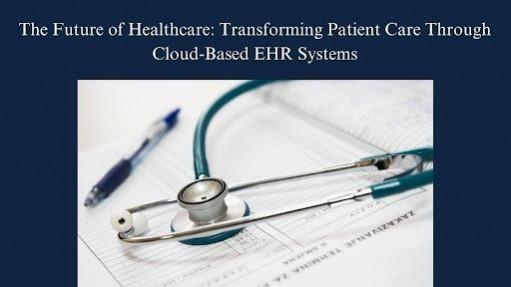
In recent years, the healthcare industry has undergone a digital transformation that is reshaping how patient data is managed, stored, and accessed. Central to this revolution are cloud-based Electronic Health Record (EHR) systems, which have not only improved healthcare service delivery but also optimized system performance and security. Pramod Malikarjun Halapeti explores the technical innovations driving this change and how they promise to revolutionize patient care.
Cloud-Based EHR Systems: A Leap Into the Future
The transition to cloud-based EHR systems is revolutionizing healthcare infrastructure by improving data accessibility, system efficiency, and patient care. Cloud solutions have boosted data access efficiency by up to 23.6% over traditional systems, benefiting rural hospitals by bridging the resource gap with urban facilities. Additionally, hybrid cloud models reduce operational costs, achieving a 16.3% decrease in expenses, further enhancing the overall effectiveness and affordability of healthcare services.
Enhanced Security Frameworks for Sensitive Patient Data
As healthcare data digitizes, ensuring security is crucial. Cloud-based systems use multi-layered security, including encryption, access controls, and data masking. The HealthShieldAI framework has a 91.8% success rate in threat prevention, securing data with 99.99% effectiveness while ensuring HIPAA compliance.
Performance Optimization: Speed and Reliability in Healthcare
Quick access to patient data is crucial for healthcare professionals, making system performance optimization a top priority in cloud-based EHR transitions. Research shows that well-resourced cloud infrastructures can handle up to 1000 concurrent requests, with response times as fast as 0.8 seconds. Additionally, regional computing architectures reduce data access latency by 33%, enhance query response times by 28%, and increase system throughput by 45%. These improvements enable healthcare providers to deliver faster, more efficient, and effective care.
Interoperability: Breaking Down Data Silos in Healthcare
A major challenge in healthcare is sharing patient data across systems, especially in multi-site environments. Cloud-based EHR solutions have improved interoperability through standards like HL7 FHIR, representing up to 89% of clinical research data elements. Additionally, microservices and cloud APIs enhance scalability, enabling faster data processing and improving overall service delivery.
The Role of Microservices and Containers in Healthcare
The adoption of microservices architecture in healthcare cloud systems enhances scalability and performance. By breaking down monolithic applications, response times improve by 27%, and CPU utilization increases by 24%. This modular approach also reduces deployment time by 35%, supporting the management of growing patient data needs.
Cloud Integration: Improving Data Processing and Cost Efficiency
Cloud computing in healthcare enhances data processing, allowing systems to handle up to 600 MB of medical data per minute during peak times. Hybrid cloud models ensure 99.9% system availability, reducing downtime and operational costs by 30%, while improving speed, efficiency, and data integrity for a cost-effective IT approach.
Looking Ahead: Bridging Gaps and Enhancing Patient Care
Despite the remarkable progress in cloud-based healthcare technologies, challenges remain. Rural hospitals still lag behind their urban counterparts in adopting advanced EHR systems, but the promise of cloud solutions is poised to close this gap. By enhancing system reliability, ensuring robust security, and improving performance, cloud-based EHR systems offer a future where patient care is faster, safer, and more efficient. As regulatory compliance becomes increasingly automated and security standards continue to improve, healthcare organizations will be better equipped to deliver top-tier care while maintaining patient privacy.
In conclusion, the technological advancements in cloud-based EHR systems are nothing short of transformative. As highlighted by Pramod Malikarjun Halapeti, these innovations in architecture, security, interoperability, and performance optimization are not just improving data management; they are reshaping the entire landscape of healthcare delivery. The continued evolution of these technologies promises to make healthcare systems more efficient, secure, and accessible for all.

















